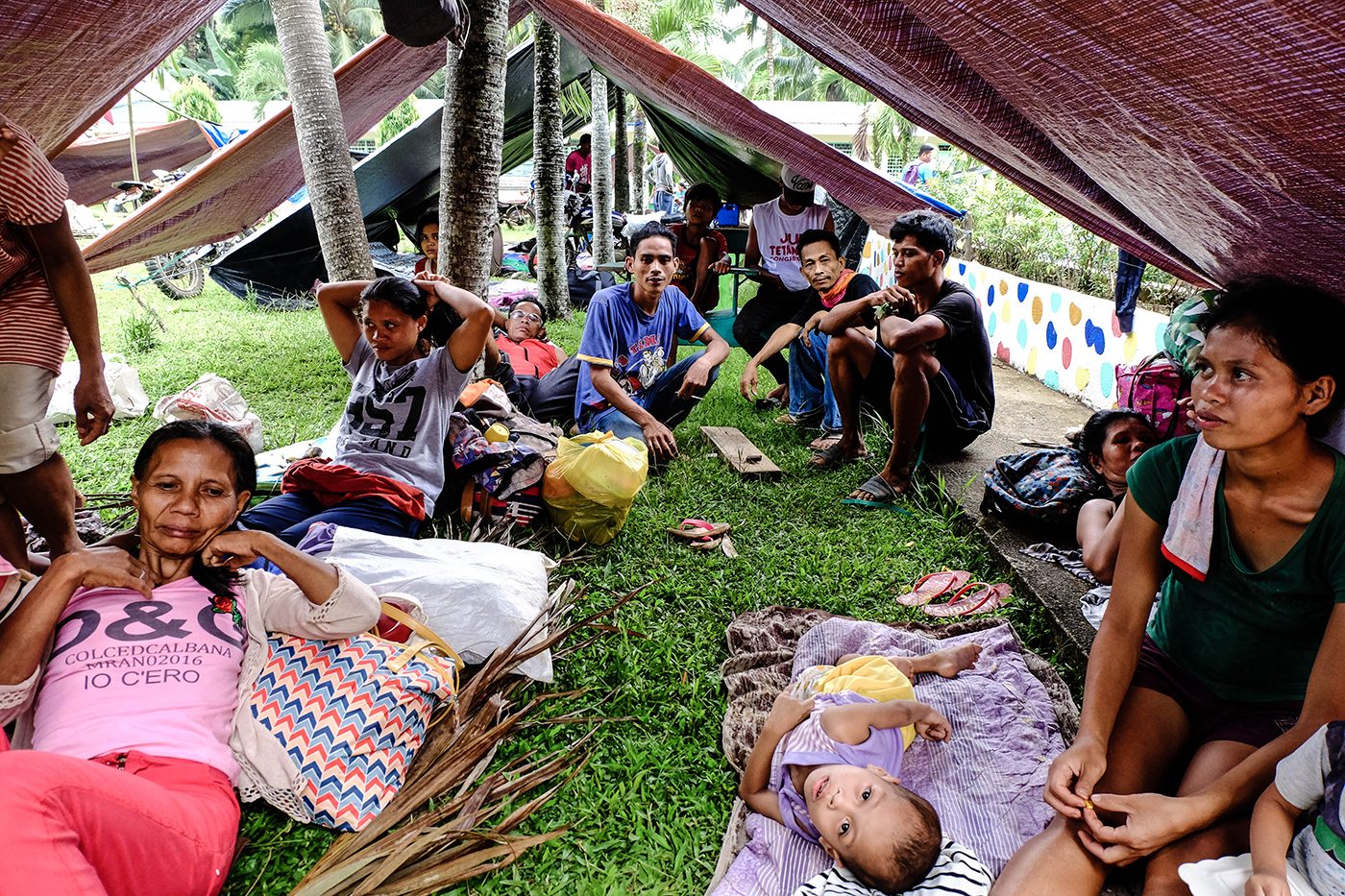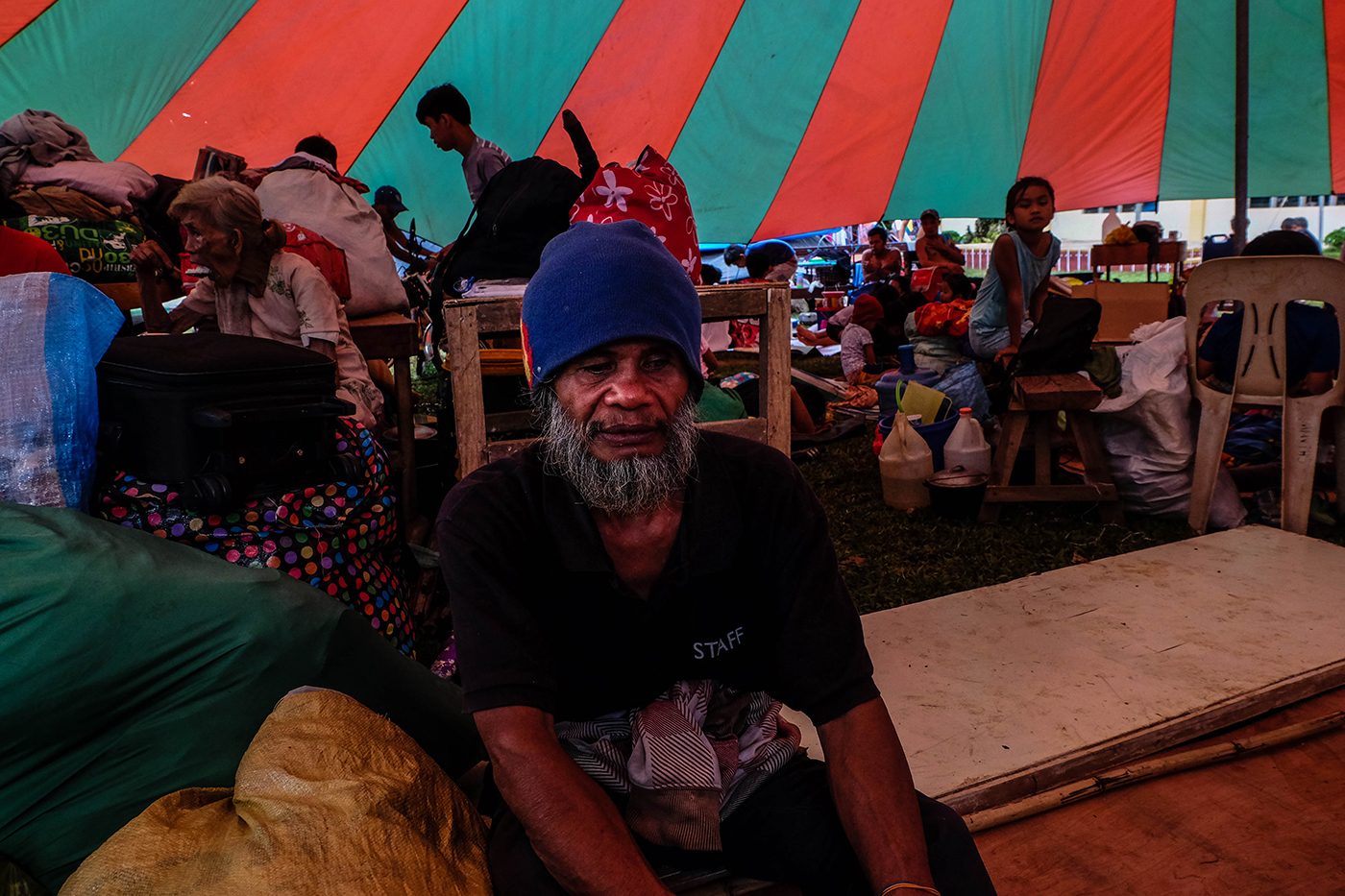SUMMARY
This is AI generated summarization, which may have errors. For context, always refer to the full article.

COTABATO, Philippines – Residents of Barangay Luayon in Makilala town recalled hearing something like a detonated bomb on Thursday, October 31, frightening enough to prompt families to run out of their homes to head for safer ground.
The earth shook, and before they knew it, hundreds of houses collapsed, some buried under the landslide triggered by the magnitude 6.5 earthquake – the third strong tremor felt in the area in just two weeks.
“There was rolling thunder that came from beneath the ground and then the massive shaking came. The trees swayed and then the scream of the people followed as they rushed out of their homes,” said Marieta Limbas.
Luayon is on the foot of Mount Miponguis. At least 300 houses at the barangay center collapsed. The sloping terrain caused the houses from the top to tumble down along with rocks, soil, and trees.
Limbas said that she was with her husband Rufino harvesting sap from rubber trees when the October 31 earthquake struck.
“We were almost hit by the landslide following the quake. It took us more than 3 hours to get away from the landslide area and into the safety of our barangay,” Limbas said.
Helen Ramirez, meanwhile, said the earthquake “was like a bomb.”
“It exploded and the trees swayed, they just [melted] into the rocks and [slid] away,” Ramirez said.
Roselyn Aguanan recalled that when they looked back after running away from their houses, there was nothing left of the row of houses along the streets.
“When the quake happened on October 16 and 29, our [house] was still there, the market was still there. Then that quake happened, nothing was left of our of village,” Aguanan said.
Luayon Barangay Captaion Rable Ramirez had chosen to stay in their barangay and refused to evacuate despite also losing his home to the earthquake. Ramirez is also sickly, undergoing weekly dialysis treatment in Kidapawan City.
“He won’t leave the barangay. He [chose] to stay, but he is sick and nothing [is] left of his house,” Helen Ramirez, his relative, said.
Escape
Following rains on the afternoon of October 31, residents decided to flee on foot to escape another possible landslide.
Residents from Sitio Balawan started their exodus from their villages at 8 pm on Thursday, October 31, and arrived at the national highway at almost 2 am on Friday, November 1.
Nearly a thousand people have evacuated to the Malasila Elementary School and High School on Friday.
“We need tents, tarpaulins and sleeping materials,” Ramirez said.
Luayon residents are contemplating if there was still something to go back to in their village after the earthquake flattened everything.
“Where do we go from here? We don’t know,” Ramirez added.
The earthquakes caused massive landslides and flattened hundreds of houses in Barangay Luayon, and in Sitio Balawan, Barangay Malasila, where 3 people are missing.
While the epicenter of the magnitude 6.6 earthquake on October 29 and the magnitude 6.5 earthquake on October 31 was Tulunan, Cotabato, the town of Makilala also felt Intensity 7 during the earthquakes.
Three were reported dead in Makilala due to the October 31 earthquake: Barangay Batasan village chair Cesar Bangot, Barangay Health Worker Tessie Alcayde, and Rommel Galicia. Bangot was hit by falling debris, Alcayde was buried in a landslide, while Galicia was pinned by boulders and trees.
Julian Dayday said that her husband Rosalino failed to return home after the earthquake.
“He was harvesting rubber sap when the quake happened and the area where he was is now covered by a landslide,” Dayday said, crying.
Meanwhile, best friends Rolando Ancero Jr, 14; and Triumph Picao, 15, are also missing.
Teodocia Picao said that her son went to harvest some ginger and vegetables with Ancero when the quake happened.
Picao and Rolando Ancero Sr feared that their sons might have been buried by the landslide, as they had been looking for the two since the earthquake struck.
“Yesterday and today we looked for them. I pray that they are alive, that they may have been thrown by the landslide downwards,” the older Ancero said.
The landslide in Sitio Balawan was so massive that residents could even see the tip of the bamboos and trees where the landslide hit.

Rescue operations
On Friday, the provincial government of Lanao del Sur sent a rescue unit from the Disaster Risk Reduction and Management Office and a social worker from the Provincial Social Welfare and Development Office to Makilala.
“We sent our [search and rescue] to Makilala, Cotabato to respond to the needs of our fellow Filipinos living there who have become victims of the recent natural calamities happening in the said province,” said Lanao del Sur Governor Mamintal Adiong Jr.
The team left Marawi City on Friday and will be in Makilala by Saturday, November 2. It will coordinate and report to the Makilala Municipal Disaster Risk Reduction and Management Office.
The provincial government said it would send relief goods for 1,200 families, as well as financial assistance for the victims of the earthquake. Adiong said they would also conduct medical missions for the victims.
Meanwhile, a strong magnitude 5 aftershock rocked Makilala, Cotabato, past 2 pm on Friday. Rhommel Grutas, science research specialist from the Philippine Institute of Volcanology and Seismology, said that as of this posting, there have been 437 aftershocks since Thursday’s earthquake. – with a report from Jee Y. Geronimo/Rappler.com
Add a comment
How does this make you feel?





There are no comments yet. Add your comment to start the conversation.